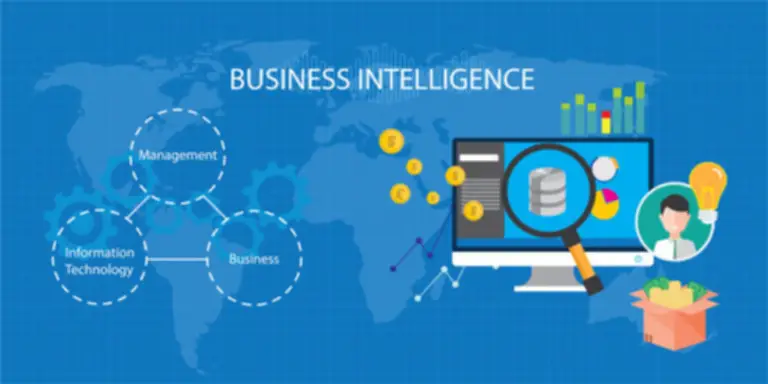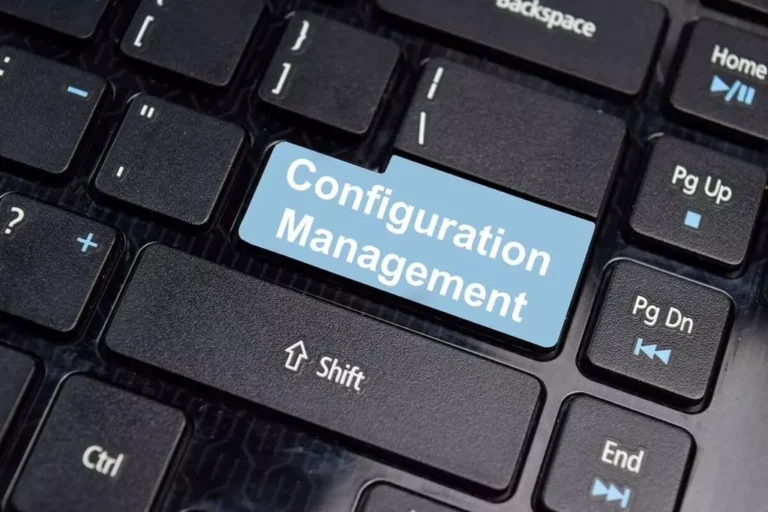Ci Cd Process: Circulate, Levels, And Significant Best Practices
Once you could have successfully built-in OpenTelemetry into your CI/CD pipeline, the next crucial step is to research the telemetry information we collected. This knowledge can provide valuable insights into the performance and health of our pipeline. OpenTelemetry is a group of API’s SDK’s and tools that are used to generate, collect and export telemetry knowledge from distributed methods.Telemetry information consists of traces, metrics and logs collected from a distributed system. The integration inside ci monitoring GitLab presents a seamless expertise, combining code repository and CI monitoring in a single place.
Steps For Building A Ci/cd Staff

When teams get rapid answers on which workflows and approaches deliver successful builds, that knowledge goes into each future build. Teams utilizing CI/CD additionally tend to front-load their high quality checks, like starting out with version control configuration and practice definitions. In addition to incessantly checking code, developers will manage features and fixes on completely different timelines, and can then management which code and options are prepared for manufacturing.

Platform Engineering: Empowering Key Kubernetes Use Cases With Dynatrace
The deployment course of varies based on the nature of the applying and the manufacturing environment. For instance, it might contain deploying a Docker container to a Kubernetes cluster, updating an internet software on a cloud service like AWS or Google Cloud, or simply uploading files to a server. The source stage, often referred to as the version control stage, forms the bedrock of the CI/CD pipeline.
- Monitoring might help establish unauthorized entry makes an attempt, uncommon behavior, and indicators of compromise.
- CI/CD is a sequence of interconnected processes that empower developers to construct quality software by way of well-aligned and automated improvement, testing, delivery, and deployment.
- When a difficulty arises, this dashboard should allow you to shortly narrow your investigation to your provider, infrastructure, pipelines, or other dependencies before you begin to troubleshoot deeper.
What Is Immutable Infrastructure?

That’s as a result of when a developer working in isolation makes a change to an application, there’s an opportunity it’ll battle with different adjustments being concurrently made by different developers. This means testing every thing from classes and function to the completely different modules that comprise the entire app. One of the benefits of CI is that if automated testing discovers a conflict between new and existing code, it’s simpler to repair these bugs rapidly and sometimes. In conclusion, CI/CD monitoring is an important side of contemporary software program development, enabling organizations to deliver high-quality software program products swiftly and securely.

Integrating exterior services without proper oversight or vetting can expose the pipeline to vulnerabilities that compromise the integrity of the software. Attackers might target these companies to achieve unauthorized entry, inject malicious code, or exfiltrate delicate data. Poisoned pipeline execution refers to an attack the place a hacker compromises the CI/CD pipeline to execute malicious code through the build or deployment course of. By injecting malicious scripts or tampering with the pipeline configuration, attackers can manipulate the software in construct or deployment, leading to the introduction of malicious code, information breaches, or system compromise. This early detection and correction of points embody the precept of ‘fail fast,’ which saves time and assets within the software development lifecycle. However, it’s not simply software that has evolved—the course of of creating and creating it has also changed.
MTTR measures the average time it takes to recuperate from a failure or problem in your production surroundings. Monitoring this metric helps assess the efficiency of your incident response and determination processes. Teams can enhance the software delivery process by utilizing well-known CI/CD monitoring tools like Datadog and Grafana. CI/CD introduces ongoing automation and continuous monitoring throughout the lifecycle of apps, from integration and testing phases to supply and deployment. Securing the CI/CD pipeline includes implementing a variety of safety practices and technologies to guard the integrity and confidentiality of the software improvement and deployment process. The ungoverned usage of third-party providers within the CI/CD pipeline introduces safety dangers.
As automation is amongst the key components of an efficient CI/CD pipeline, it makes good sense to automate monitoring and observability too. The idea of steady monitoring and observability is a logical corollary of the CI/CD philosophy. They must be automated in the same method integration, testing, and deployment have been automated. In extremely dynamic and scalable environments, the entire monitoring process must be adapted to the continuously implemented changes with out the necessity for manual intervention and configuration. To achieve that, we have to establish and prioritize the critical capabilities that our technology stack requires to be able to be effective. As Deloitte reports, continuous integration (CI) is a software program improvement practice that streamlines the interior course of of making software program.
If none of the work has been done for a specific product feature, the group ought to start small—one functionality at a time. In this primary phase, developers merge their code modifications with primary code repositories for his or her projects. Deployment size should ideally be as small as attainable for a project, which creates a quick deployment and feedback loop, helping the CI/CD pipeline with extra iterations for enchancment over the base.
In the screenshot beneath, Datadog’s OOTB pipelines dashboard provides you visibility into the highest failed pipelines and shows you the extent to which they’re slowing down your pipelines’ length. If you choose a pipeline, you can see its latest failed executions, which provide extra granular context for troubleshooting the foundation explanation for the problem. Dashboards function the perfect launching point for investigating points in your CI/CD system. We recommend creating a fast reference dashboard that provides a high-level overview of key elements of your CI/CD system and customary areas of failure. When something goes incorrect in your CI/CD system, accessing the right dashboards may help you quickly establish and resolve issues.
It integrates seamlessly with InfluxDB and different data sources to create interactive and customizable dashboards. Grafana’s visualization capabilities permit teams to observe CI/CD pipeline metrics in real-time and set up alerts for important issues. InfluxDB is a time collection database ideal for storing and querying metrics data generated by CI/CD pipelines.
OpenTelemetry is an open source observability framework that gives APIs, libraries, and instrumentation for collecting metrics, traces, and logs. It helps a broad range of programming languages and frameworks, making it simple to instrument CI/CD pipelines and gain insights into their efficiency. Implement secure secrets dealing with practices, similar to encrypting secrets at relaxation and in transit, utilizing robust encryption algorithms, and restricting entry to secrets based mostly on the principle of least privilege. Leverage secrets management tools and keep away from hard-coding secrets in configuration recordsdata or supply code. Regularly replace and patch these dependencies to address any safety vulnerabilities which might be discovered over time. Use dependency management instruments to automate the update course of and ensure the use of trusted and safe components.
This not solely addresses our own requirements but in addition sets the inspiration for broader functions of our CI/CD observability solution. Moreover, we realized that the finest way we have been observing our CI/CD pipelines on the grafana/grafana repo was highly opinionated, which also reflected in how we constructed these initial dashboards. The Grafana group has tens — if not lots of — of energetic repositories, each with its personal particular observability needs and processes. We had been having points with flaky exams, especially in Grafana OSS and Grafana Enterprise repos, which limited our capability to see if our main branches were damaged.
It can gather a variety of system and software metrics, including CPU usage, memory consumption, disk I/O, and community statistics, in addition to custom metrics from varied phases of the CI/CD pipeline. A fast CI/CD pipeline permits developers to repair points that go into production shortly as a end result of sooner turnaround occasions. This helps enhance end-user expertise, reduces downtime, and improves the company’s backside line through better Mean Time to Recovery (MTTR). Insufficient logging and visibility hinder the flexibility to detect and reply to security incidents within the CI/CD pipeline. Without complete logging, monitoring, and auditing, it becomes difficult to determine anomalous habits, observe modifications, or investigate safety events. When effectively executed, this CI/CD danger permits attackers to function undetected and canopy their tracks.
Zeet simplifies the entire deployment process, from code decide to working functions in manufacturing. It seamlessly integrates with popular version management methods like Git and provides a user-friendly interface for managing deployments. With Zeet, groups can easily create and configure deployment pipelines, automate testing and quality assurance, and deploy functions with a single click on. Continuous integration/continuous delivery (CI/CD) is a set of procedures for helping software improvement teams persistently and reliably ship code changes. Continuous integration (CI) refers again to the apply of routinely and frequently integrating code modifications into a shared supply code repository. Continuous supply and/or deployment (CD) is a 2 half process that refers to the integration, testing, and supply of code adjustments.
Transform Your Business With AI Software Development Solutions https://www.globalcloudteam.com/
